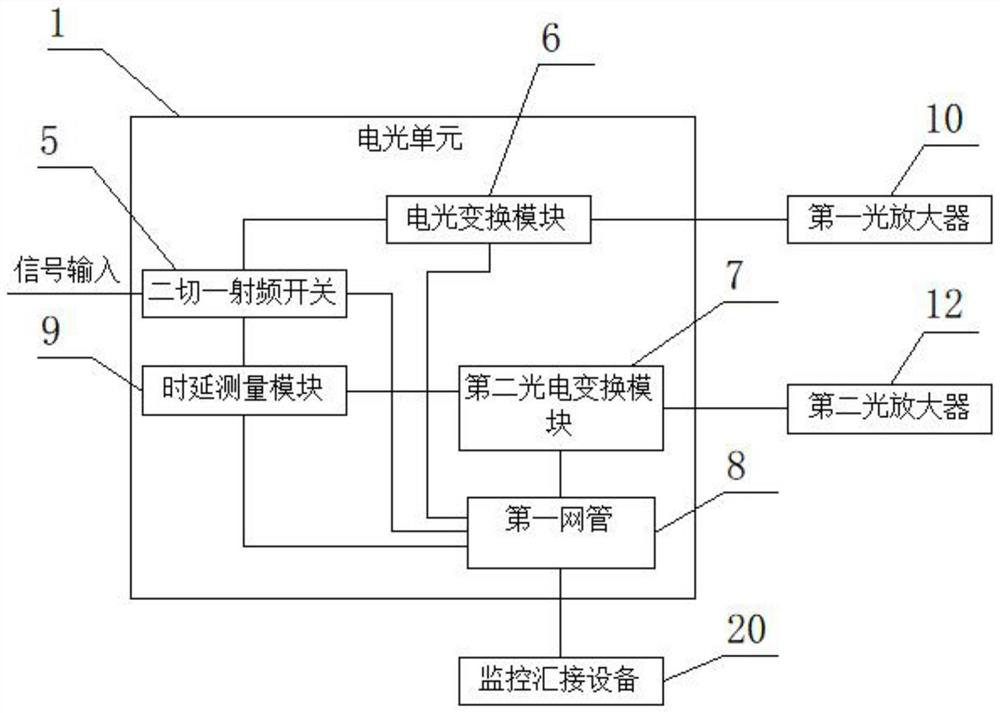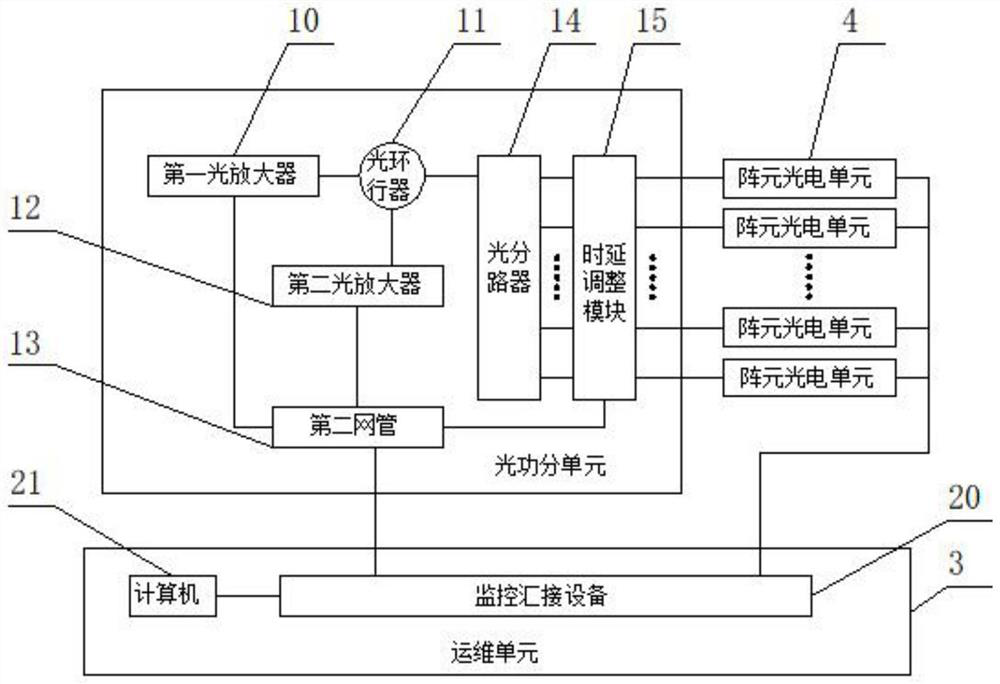Phased array time-frequency synchronous distribution time delay consistency automatic calibration system
A time-frequency synchronization and consistency technology, applied in the field of phased array radar, can solve the problem of large delay calibration error
- Summary
- Abstract
- Description
- Claims
- Application Information
AI Technical Summary
Problems solved by technology
Method used
Image
Examples
Embodiment Construction
[0039] Embodiments of the present invention are described in detail below, examples of which are shown in the drawings, wherein the same or similar reference numerals designate the same or similar elements or elements having the same or similar functions throughout. The embodiments described below by referring to the figures are exemplary and are intended to explain the present invention and should not be construed as limiting the present invention.
[0040] see Figure 1 to Figure 4 , the present invention provides a phased array time-frequency synchronous distribution delay consistency automatic calibration system, including an electro-optical unit 1, an optical power sub-unit 2, an operation and maintenance unit 3 and several array element photoelectric units 4;
[0041]The electro-optical unit 1 is connected to the optical power sub-unit 2, several array element photoelectric units 4 are respectively connected to the optical power sub-unit 2, and the operation and maintena...
PUM
 Login to View More
Login to View More Abstract
Description
Claims
Application Information
 Login to View More
Login to View More - R&D
- Intellectual Property
- Life Sciences
- Materials
- Tech Scout
- Unparalleled Data Quality
- Higher Quality Content
- 60% Fewer Hallucinations
Browse by: Latest US Patents, China's latest patents, Technical Efficacy Thesaurus, Application Domain, Technology Topic, Popular Technical Reports.
© 2025 PatSnap. All rights reserved.Legal|Privacy policy|Modern Slavery Act Transparency Statement|Sitemap|About US| Contact US: help@patsnap.com



